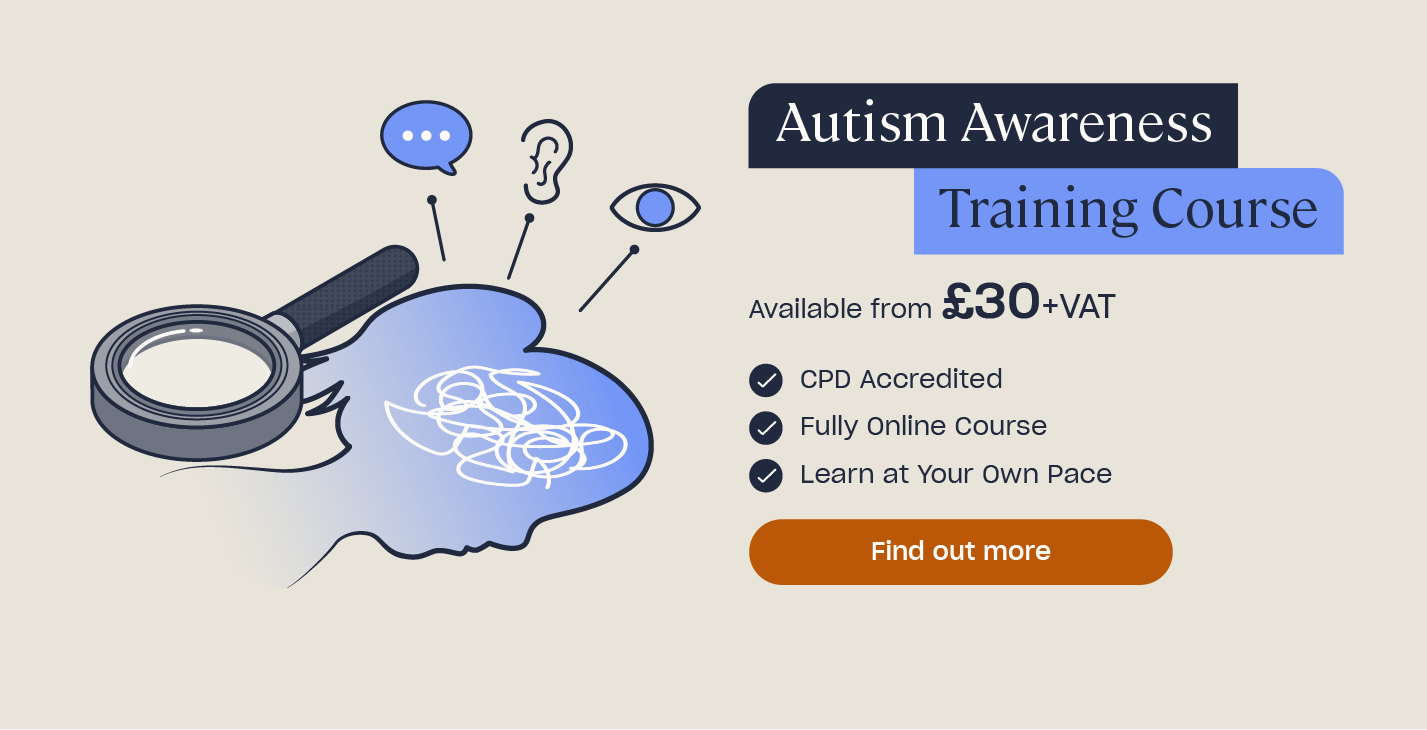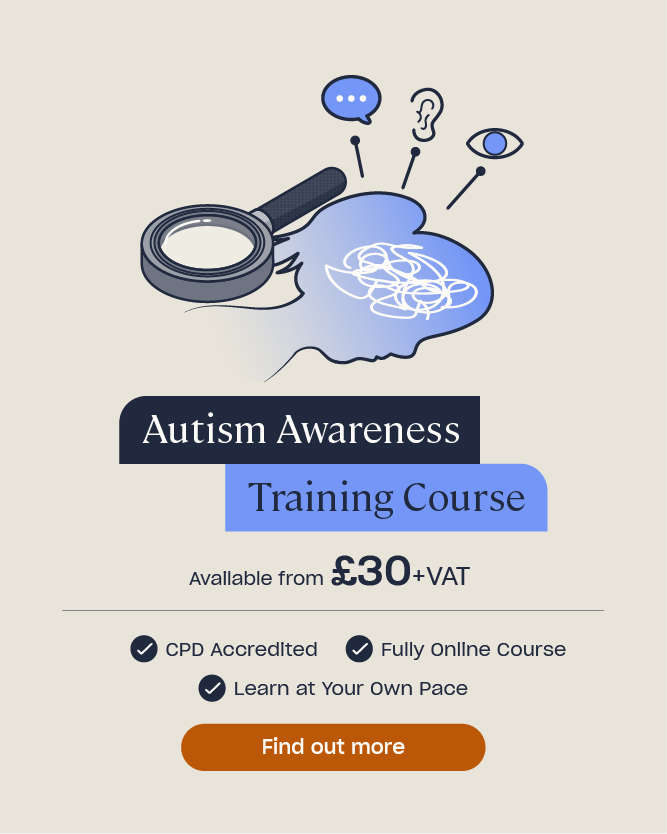Autism in Females: Is it Different?
What is Autism?
Autism is a life-long neurological difference which means that autistic individuals experience and interact with the world differently to non-autistic people. These differences can result in various strengths and challenges.
Autism is best understood within the context of neurodiversity. This is the concept that the human brain shows a wide range of natural variance. Autism is a difference to be supported, rather than a disorder or impairment to be treated.
Autism is a spectrum, meaning that a person’s experience of autism is unique to them. You will not come across two autistic individuals who share exactly the same strengths and challenges. This means that each person may need different support, and to varying degrees.
Although autism affects everyone differently, there are shared areas of difference. You may come across different terminology to describe these, including the ‘triad of impairments’, a term coined following pioneering work by Dr Lorna Wing and Dr Judith Gould in the 1970s.
The main areas of difference are:
- Communication and language differences.
- Social interaction differences.
- Rigid and repetitive behaviours, activities, and interests.
- Sensory differences.
In-depth Autism Awareness training
Our Autism Awareness in Education course is designed to help anyone who works in an education setting understand more about autism, and how to provide individualised, effective support to the autistic children and young people in their care. You may also be interested in our SEND in the Classroom course.
Autism in Girls and Women
Autism is a condition that affects all genders. However, current research shows that the ratio of diagnosed autistic males to females is 1:3 (Loomes et al, 2017). Why is this the case? Does autism really affect more men than women? There is some debate as to whether the prevalence of autism differs, or if the lower numbers of autistic girls and women are due to other factors.
There have recently been some high-profile female celebrities who have received an autism diagnosis in adulthood – including television presenter, Melanie Sykes. The media attention of these cases is helping to further public awareness, as there is still much stereotyping within media representations of autistic people (usually white, male individuals with genius capabilities, which does not reflect the breadth of autistic experience).

Why are Fewer Women Diagnosed with Autism?
There are a number of factors that could help explain why autistic girls and women are less likely to be diagnosed:
- Traditionally research has focussed around males and the characteristics most in line with an external presentation of autism often seen in males (we will look at this in more detail later in the article).
- The diagnostic criteria for autism has been historically based on the ways in which many autistic males present, meaning that it may be less suited to diagnosing autistic females. (Under current criteria, as set out in the ICD-11 and DSM-V diagnostic manuals, individuals may receive a diagnosis of Autism Spectrum Disorder – this replaced previous distinctions such as Asperger’s Syndrome, childhood autism, and pervasive developmental disorder-not otherwise specified (PDD-NOS), which also carried this male bias).
- Autistic females may be more likely to mask as young children, meaning that differences may not be picked up on at an early age. Masking is the suppression of parts of an individual’s autistic identity, often used as a strategy to ‘fit-in’. Autistic girls are often more skilled at mimicking their neurotypical peers. Not only does this lead to symptoms not being spotted, but it can be exhausting, and impact negatively on mental health. Parents often report what is sometimes called, ‘the Coke bottle effect’ – the pressure of coping with anxiety, and masking their autistic identity during the school day builds, and is only released when they get home.
- Due to gendered social expectations, girls’ differences may be perceived in different ways – for example, it may be considered more ‘usual’ for a girl to sit alone playing quietly, whereas a boy doing the same might be viewed as not socialising in a usual way. Similarly an autistic girl having a meltdown may be viewed as emotional and hysterical, conforming to gender-stereotyped views of girls (Autistic Girls Network report, 2021).
- In line with displaying rigid and repetitive interests, behaviours, and activities, autistic people often develop intense interests, sometimes referred to as ‘special interests’. The special interests of those raised as females generally tend to be more ‘socially acceptable’. Autistic boys often focus on what could be considered unusual subjects, like the inner workings of machinery or train timetables, for example. Autistic girls, on the other hand, commonly develop strong interests in things that are considered more typical of girls their age, such as books, dolls, or celebrities. It’s likely that their interest will be more intensified but it’s much more likely to go unnoticed.

How Does Autism Present Itself Differently in Females?
It appears that women are under-diagnosed when it comes to autism. In the past, it’s been suggested that the behavioural characteristics of autistic females vary greatly compared to those of autistic men.

However, as highlighted by the Autistic Girls Network, rather than thinking in gendered terms, it can be more useful to think in terms of external and internal presentations. Females are more likely to exhibit an internal presentation, but so do some autistic males and non-binary individuals.
The fact that females are more likely to receive a diagnosis later in childhood or into adulthood, or receive a different initial diagnosis, may be down to autistic traits being overlooked or missed due to an internal presentation.
Signs of Autism in Females
If you are supporting an autistic person, as an education professional or otherwise, it is useful to be aware of what to look out for. Signs of an internal presentation of autism, most commonly seen in females, might include the following behaviours or traits:
- May appear more social but find it difficult to understand social hierarchy, be on the peripheries of friendship groups, or have intense friendships with regular ‘fallings out’. These differences in social interaction often become apparent in the pre-teen and teenage years when social interaction with peers becomes more nuanced.
- May experience high levels of anxiety at school, but mask this at school, only to display distressed behaviours once they are home.
- May have a range of techniques to compensate and hide their difficulties from teachers and staff.
- May struggle with transitions, large and small, and also with unstructured times such as break or lunch times.
- May display situational mutism (be unable to talk in certain situations)
- May experience intense empathy (including towards animals)
- May seem emotionally and socially younger than their peers.
- May display a vivid imagination. This could include developing an elaborate fantasy world or taking great joy in escaping into fiction.
- May enjoy collecting things – as opposed to playing with the things they collect.
- May exhibit perfectionist tendencies.
- May stim (use self-stimulating, repetitive behaviours, such as finger clicking or spinning, to regulate or for fun) in ways that are less noticeable – small movements or internalised.
- May express strong opinions when they are not masking, and may be difficult to convince that they are wrong.
- May have a large or advanced vocabulary.
- May find coping with their adolescent years, including getting to grips with their sexuality, relationships, and puberty, even more difficult than non-autistic teenagers. In school sex, relationships, and health education should always be differentiated to best meet the needs of children with SEND, including autistic young people.
This is not an exhaustive list, and the autistic experience will be different for each individual, who will have their own unique profile of strengths and challenges. Our Autism Awareness in Education training can also offer a more in-depth consideration of how shared areas of difference may impact autistic children and young people in general.

Autistic Women and Girls and Mental Health
Females often receive other diagnoses before they are recognised as autistic. This includes mental health conditions, such as anxiety or depression, which could be linked to the effects of sustained masking, high levels of anxiety, and not understanding their own differences. It is also likely that individuals who present in an internal way are more likely to internalise problems too which can damage their mental health.
Securing an early diagnosis is a key priority of the UK government’s Autism Strategy 2021-2026 in order to ensure that autistic people receive effective support, and outcomes are improved. As we have seen, in the case of autistic females (and those with an internal presentation) that early diagnosis is currently less likely to happen. Therefore it is essential that education professionals, and the public in general, increase their understanding of autism, and what it means to be autistic. A wider knowledge of how autistic traits may present will help to ensure that individuals are not overlooked and that effective, individualised support can be put in place.
Further Resources:
- What is Autistic Masking?
- Autism Awareness in Education Training
- Parenting Changes to Make for Teens with Autism
- Autism Awareness Quiz
- How Does ADHD Differ in Females?
- Autism Feelings Chart for Children
- How to Support Children with Pathological Demand Avoidance (PDA)
- How to Support a Child with Autism in the Classroom
- Sensory Overload in Children
- Sensory Overload in Adults
- Autism Awareness Training











